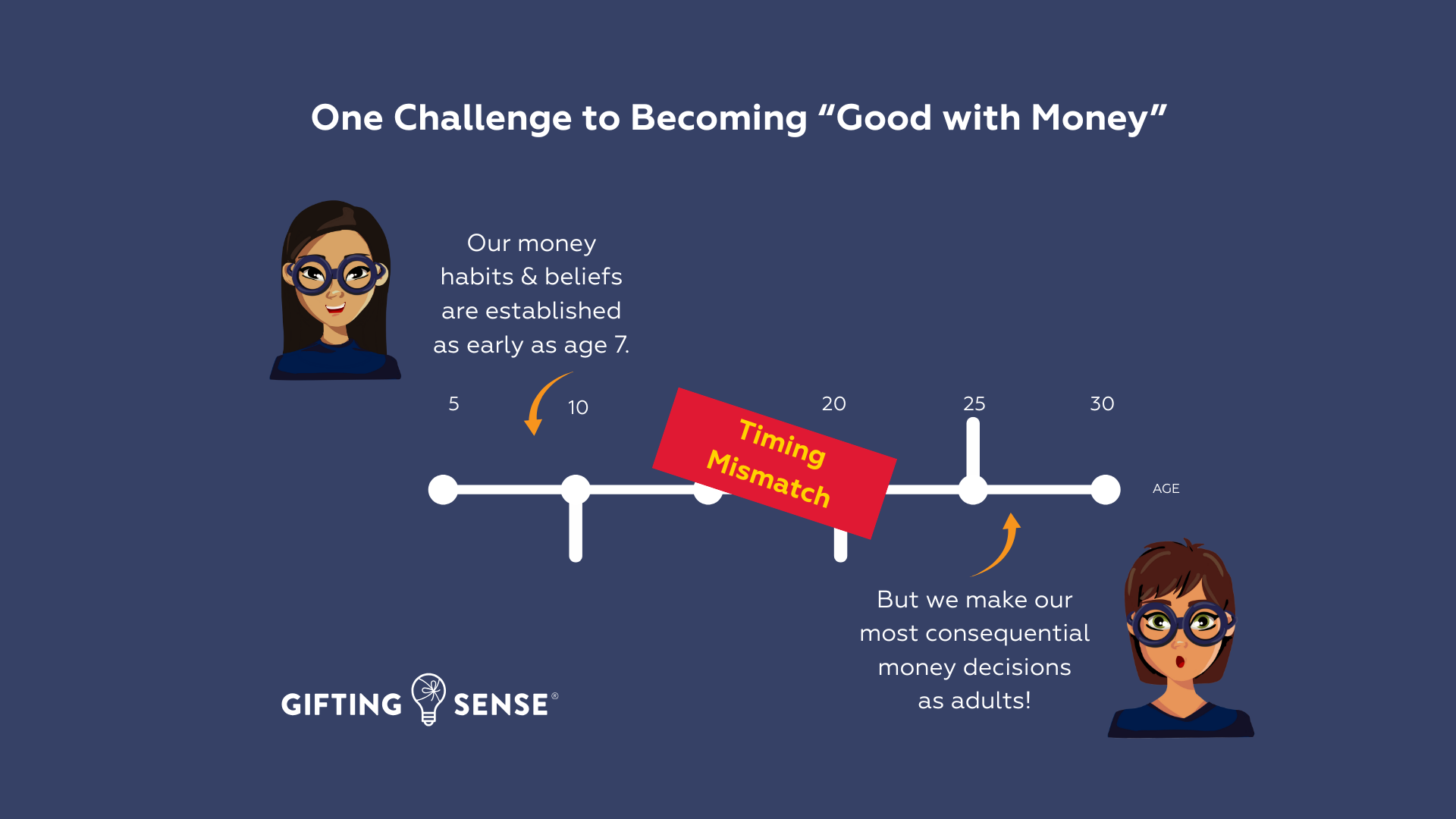We’re normally very bullish about the idea that anyone can learn to be good with money. That optimism continues, but this post discusses one real (but not insurmountable) complication.
There’s a timing mismatch.
Our money habits and beliefs are established as early as age 7. However, we make most of our big, consequential personal finance decisions (e.g., choosing a job, credit card, bank, vehicle, retirement savings program, or home) when we’re adults.
Why does a timing mismatch matter?
In between, unproductive money personalities solidify and entrench. You start to believe that people with “your background” are – or – are not – good with money. The ability of false beliefs and poor habits to undermine future financial decision-making gets masked by the fact that “the big financial decisions” are yet to be made.
Is there a solution?
How do we ensure as many young people as possible develop productive money habits they can rely on later in life? What real-life positive money-management experience can we give youth while their money personalities develop? We can let them work on a problem that matters to them in real-time (“Should I buy this item or experience?”). In other words, let’s encourage kids to think before buying. It’s just too easy to buy first and think later in our online/ digital payments world.
When can mindful spending lessons be the most effective?
People often ask us, “When is the best time to teach kids about money?” Our standard answer is “When they want some.” But ten-to-fourteen-year-olds are in a developmental sweet spot. Middle school students are cognitively burgeoning but still mentally flexible, and they’re starting to earn and spend a little bit of money. It only takes one class to teach students mindful spending. If they practice a couple of times afterward, they’ll have a powerful new life skill.
How much can a simple habit accomplish?
Let’s talk about teeth! Cavities and dentures are nowhere near as prevalent as they used to be – thanks to regular toothbrushing – which only became a “thing” after the Second World War.
Like planting a tree, there’s no better time than now to introduce kids to mindful spending. It takes minutes to ask simple questions about typical purchases before making a final decision. But those minutes can spare a person (and their family) days, weeks, months, and sometimes even years of disappointment and waste. More importantly, developing the habit of thinking before buying helps combat the very real timing mismatch that makes being good with money more complicated than it looks.
As we all know, avoiding financial cavities is much easier than filling them.
To learn more about our FREE and safe mindful spending tool, click on the pink or blue buttons below.
Child Development For Parents For Teachers



